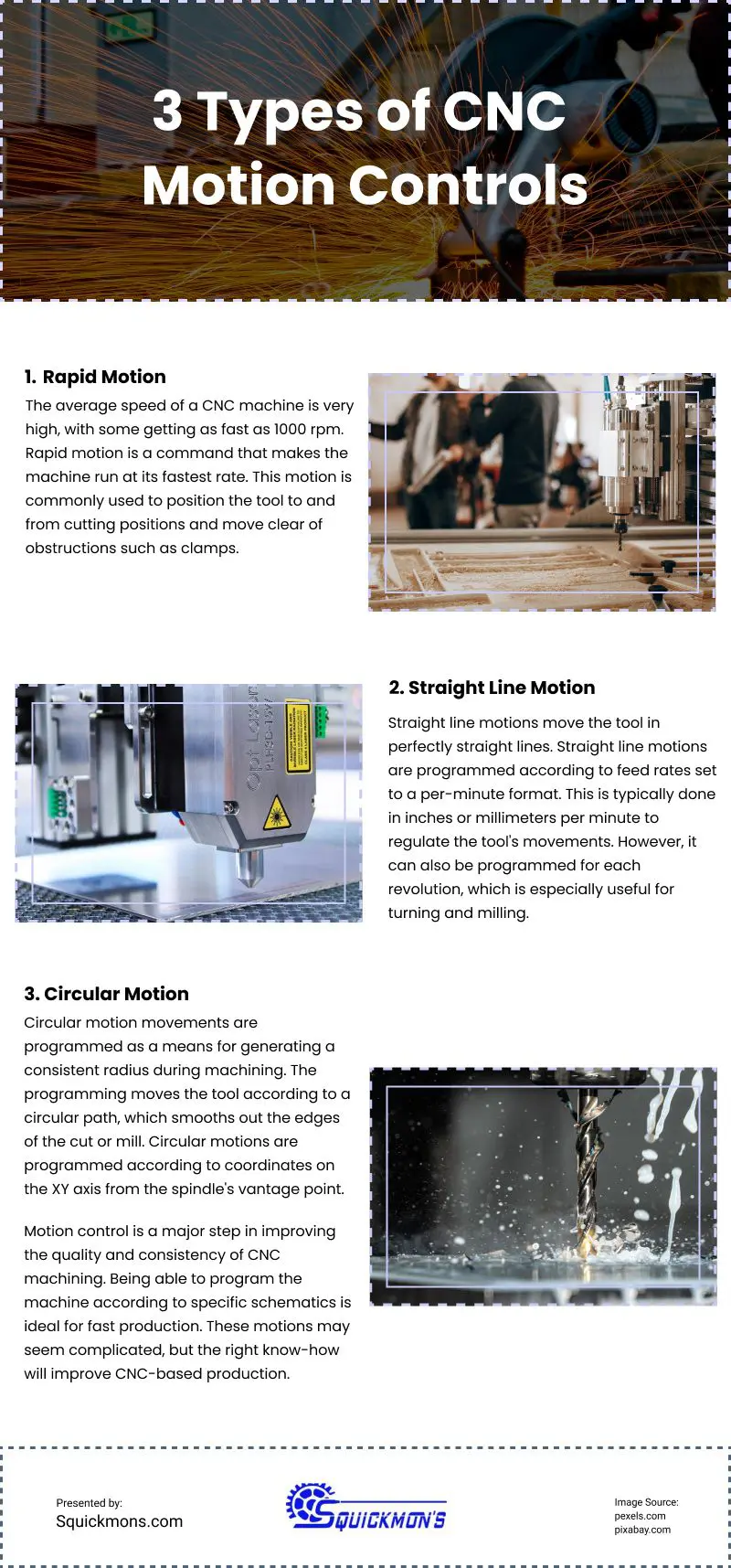
Motion control is an important aspect of industrial robots and plasma CNC machines. In the old days, CNC positioning was controlled by a hand crank, requiring physical interaction by the engineer. Now, operators rely on motion control to streamline the moving process. Read on to learn more about CNC motion control, its uses, and the types available.
Since CNC machines may be programmed, almost countless uses and orientations are available. There are three major motion types that all CNC machines use. These motion patterns include swift, angular, and circular movements.
There are two key similarities among the three different motion kinds. First are modal, that implies that once their positional alterations and directions are set, they won’t change till they are. You may indicate each movement that comes after a G-code instruction in programming words. The computer will consistently read each action in accordance with the first command.
The second similarity is that each motion’s terminus must be specified at the conclusion of the orders. The beginning point will be interpreted by the computer as the machine’s current location. Let’s examine the three motions now with that in mind.
Rapid Motion
Rapid motion, often referred to as positioning motion, is an instruction that causes the machine to operate at its top speed. This action is frequently utilized to move the tool away from and toward cutting locations and around obstacles like clamps.
The tool can be removed from the cutting area once the job is finished using this action as well as for resting positions. Operators utilize it in this fashion because it reduces the amount of time that is not produced during a cutting cycle. When a tool isn’t in use, you can use it again more swiftly.
The operator must always use caution when using fast movements. The average speed of a CNC machine is quite high, and some of them may reach speeds of up to 1000 rpm, which can be extremely risky. Fortunately, CNC machines include an emergency override instruction during rapid motion program verification.
Straight Line Motion
Straight line movements, as the name implies, move the tool in absolutely straight lines. When a cutting motion is necessary or when drilling and milling straight surfaces, straight-line motion is frequently utilized. You may use it while turning a straight diameter, face, or taper due to its precision.
Feed rates that are put up in a per-minute format are used to program straight-line movements. To control the tool’s motions, is commonly done in either inches per minute or millimeters per minute. For turning and milling, however, it may also be set in a per-revolution format, which is very helpful.
Spherical Motion
Programmable circular motions are used to produce a constant radius during milling. The tool is moved by programming in a circular route, which softens the edges of the milled or cut material.
From the perspective of the spindle, coordinates on the XY axis are used to program circular movements. In place of being level with the machine’s axis, the tool will instead be placed at certain distances from the product’s center. The requirements for the feed rate are created in accordance with the same guidelines established for straight-line motion per minute or rotation.
source: https://squickmons.com/cnc-motion-control-everything-you-need-to-know/
Comments
Download this infographic.
